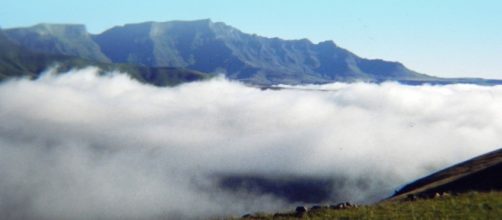UNESCO, can designate certain areas to be World Heritage Sites. Sites that qualify for World Heritage status are either of significant cultural or natural interest.South Africa has eight sites.
The Cradle of Humankind
The Cradle of Humankind is probably the most famous World Heritage Site in South Africa. It is ironic that this area which is famous for some of the oldest fossilized hominids lies only 40 kms away from Johannesburg and Pretoria, where a huge and bustling population go about their modern way of life.
It is administered through Maropeng,the official visitor site for the Cradle of Humankind.
The Site has a Hotel, conference facilities, an exhibition centre and visitors can explore the famous Sterkfontein caves.
Robben Island
Robben Island had a nasty history. Over the centuries it has been a leper colony hospital, a prison and hosted a military base. It is known as a place of incarceration for political prisoners in modern times and people now associate it with Nelson Mandela who spent 18 years in the prison.Today the island, which was declared a cultural heritage site in 1996 has a museum and guided tours can be booked from Cape Town.
Simangaliso Wetland Park
On the east coast lies the 239,566 ha. iSimangaliso Wetland Park. The diversity of the area ranges from natural marine areas and swamps tosavannah.
The area is comprised of a conglomeration of Parks and Reserves which havebeautiful beaches, outstanding game viewing, hundreds of bird species and marine life. Community co-operation and conservation are the key aspects to managing the area in an eco-friendly way. The top ten reserves include uMhuze, St Lucia and Sodwana Bay.
Maloti-Drakensberg Park
The area includes the uKhahlamba Drakensberg National Park in South Africa and the Sehlathebe National Park in Lesotho. The area is famous for specular mountain scenery. The area protects a number of endangered or rare birds and plants. Visitors can hike or camp in the park accommodation units or stay at excellent hotels such as those in the Giants Castle area.
Mapungubwe Cultural Landscape
Mapungubwe in the north of South Africa is situated in the lowveld region on the border with Zimbabwe. The area was home to one of Africa’s largest Kingdoms which lasted until the 14th century. A drier climatic period could not support such a large population and caused the dispersion of the people. Itboasts a game reserve and buffer conservancy areas, a cultural museum and tours for guests. The National Park is administered by South African National Parks.
Cape Floral region
The site incorporates national parks, wilderness areas, forestry and mountain catchments. It protects a number of fynbos species and is one of the world’s most famous areas of terrestrial diversity.
The area is set in the South West of South Africa. The total area is 557,584 ha. Visitors can choose from private and National Park accommodation in the area.
Vredefort Dome
2,023 million years ago a massive asteroid plunged into what is now a site 120kms from Johannesburg. The site isa giant astrobleme and is thelargest in the world. Scientifically it is aninteresting area as it relates to one of the planet’s most devastating natural events. It provides a full profile of the geology below the crater floor. Vredefort boasts plenty of visitor activities in the area, from 4x4 quad biking through to rafting, hiking and game viewing.
Richtersveld Cultural and Botanical Landscape
The Richtersveld is 160,000 ha of mountain and desert landscape.
It is a community project which focuses on the ancient Nama history. The area protects the Karoo vegetation and is an example of how man and Nature can live in harmony. Pastoralism is still practiced in the area. Visitors to the area enjoy staying at the Richtersveld Transfrontier Park where they can view wildlife and cultural diversity all in one place.

